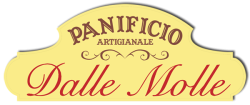
Types of Bread Around the World
Cereals are a staple food consumed worldwide, and bread is derived from them. Bread can be found in every corner of the world, but the same type of bread is not consumed everywhere.
From the Paleolithic era, through the Egyptians, Jews, Greeks, Romans… until the present day, bread has undergone significant transformations.
Climate, cereal crops, culture, historical events, mythology, and even religion have given rise to many varieties of bread. Bread adapts and evolves according to the territory and human needs. Below, we invite you on a journey to discover the different types of bread from around the world.
Explore the Different Types of Bread
Baguette
Who doesn’t know the baguette? A long and thin loaf typical of France, with a crispy golden crust and a soft, fluffy crumb. Oh là là, what a delicacy!
One theory suggests that Napoleon invented it. During campaigns against the Russians, he decreed that the bakers in his army should prepare a long and thin loaf so that soldiers could carry it in their uniform pockets.
However, bakeries are filled with baguettes, and it is one of the most famous breads in the world.
Focaccia
Focaccia is a traditional Italian bread very similar to pizza. Its secret lies in the baking and the quality of the oil because the delightful flavor is achieved when the dough absorbs all the flavor extracted from the typical local olive, “taggiasche.”
It is usually topped with olive oil, coarse salt, and rosemary, but there are many variations, such as sun-dried tomatoes, onion, provolone, Grana Padano cheese, and more.
The basic recipe is believed to have originated from the ancient Etruscans or the Greeks, but it gained fame during the Third Crusade as a famous Ligurian delight. The people of the region, facing Saracen invasions, took refuge inland, bringing with them whatever they could salvage, such as flour, water, oil, and cheese. This is the origin of the famous cheese focaccia that everyone wants to taste when they visit Recco.
Rye Bread
Germans and the inhabitants of neighboring countries consume a lot of rye bread. It is a bread with an intense and tangy flavor, dense crumb, and a dark color due to rye, which is why it is often called black bread.
Rye is a grain rich in vitamins and minerals and also contains a good amount of protein and fiber, which promotes intestinal transit. At Turris, we have a round loaf made from spelt and rye, a very healthy combination. If you’re interested, you can check out the blog “The Benefits of Spelt and Rye.”
Traditionally cultivated in Central and Northern Europe, it has been known to be prepared since the 6th century because it stays fresh for several days and pairs perfectly with any food.
In Denmark, there is a very popular variety of rye bread called Rugbrød, which is characterized by its compactness. In most Nordic countries, it is consumed as open-faced sandwiches called Smørrebrød. These consist of a slice of rye bread spread with butter and topped with various ingredients such as lettuce, chicken, tuna, tomato slices, etc.
Bagel
The bagel is a round loaf, similar to typical hamburger buns, but with a hole in the center, resembling a donut. It is made with wheat flour and has a distinctive color obtained by boiling the dough in hot water before baking.
Bagels are commonly eaten sliced in half and filled with sausages, smoked fish, or even sweet fillings. They can also be topped with sesame seeds, poppy seeds, cumin, or onion.
One might easily think that bagels originated in the United States since they are a typical New York breakfast. However, their origin dates back to 1610 when Jewish immigrants from southern Germany and Poland settled in New York and, of course, brought along their most important bread, the bagel.
Tortilla
The tortilla is the fundamental base of Mexican cuisine. It is made with corn flour and does not contain yeast. It is the origin of “tacos,” a famous dish consisting of tortillas filled with stewed meat or vegetables.
Corn is a very ancient food in Mexico and other Central American countries. In fact, it has been known since 500 BC. After the conquest, the Spanish gave it this name due to its resemblance to the shape of an omelet.
Pita
Pita is a bread originating from the Middle East that has spread to our area thanks to kebab shops.
It is typically prepared without yeast and, when baked, puffs up like a ball, leaving a large hollow inside, which can be used to fill it with meat and vegetables. It is served with hummus, a delicious chickpea paste!
Challah Bread
The most well-known Israeli bread is Challah. It is a sweet and braided bread that Jews, especially Sephardic Jews, eat on Saturdays. It is very special: before eating it, they bless it because it represents the manna that fell from heaven and nourished them during the 40 years of wandering in the desert after the exodus from Egypt.
Naan Bread
Very popular in Central Asia but more traditional in India, naan bread is a flatbread made from flour, yeast, and seeds, with a chewy texture and dense crumb. It is used as a utensil, helping to bring food to the mouth with the hands.
It is said to have been produced by monks who, during their pilgrimage travels to sacred cities, carried a clay cylinder, like an oven, which they placed over a fire to bake the bread by concentrating the heat.
If you enjoyed this journey around the world through different types of bread, you will surely also enjoy tasting them—a way to travel and experience the world’s gastronomy, culture, and flavors.
